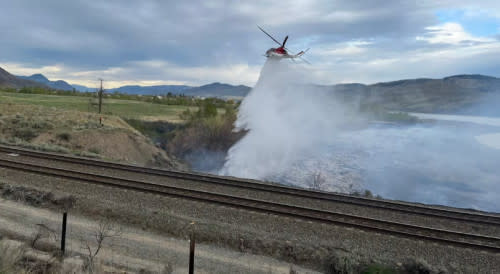U.S. wildfire forecasts get a $250,000 boost for a new AI tool

With artificial intelligence (AI) gaining traction as a possible answer to many of the world's technological and environmental challenges, the United States is hoping it will pay off dividends in the fight against wildfires.
In May, the U.S. Department of Commerce and the National Oceanic and Atmospheric Administration (NOAA) publicized the funding of $250,000 to help with the creation of a powerful, new AI model to boost fire weather forecasts through improved lightning prediction. The allocation is part of a more expansive Bipartisan Infrastructure Law (BIL) investment to upgrade fire weather research included in President Joe Biden’s Investing in America agenda.
SEE ALSO: What role can AI play in helping vulnerable species and habitats?
“This investment, made possible thanks to President [Joe] Biden’s Bipartisan Infrastructure Law, will significantly improve NOAA’s fire weather forecasts while safeguarding firefighters who risk their lives each day to serve Americans impacted by wildland fires,” said Gina Raimondo, U.S. Commerce Secretary, in a news release published in May.

(BC Wildfire Service)
SEE ALSO: Prescribed burns: How deliberately starting fires can help control them
New technology to improve accuracy of lightning prediction
The funding will enable researchers to build a customized version of LightningCast, an AI model that incorporates imagery and data from the Advanced Baseline Imager (ABI) and the Geostationary Lightning Mapper (GLM) –– used in NOAA's geostationary satellites –– to predict lightning strikes in the next hour at any given location, including centred around wildland fires.
That version of LightningCast includes a new interface, more machine-learning technology and fire-related data to boost its value for decision-making, NOAA said in the news release.

(Mark Newman/The Image Bank/Getty Images)
First responders are getting support from NOAA through the organization's ongoing testing of products, including an enhanced LightningCast and related research on early detection of hazardous, fire-generated thunderstorms.
“Wildland fires pose a major threat to our nation,” said Michael C. Morgan, assistant administrator of commerce for environmental Observation and prediction at NOAA, in the news release.
“NOAA remains committed to finding ways to use AI, machine learning and other technologies to improve the accuracy of our forecasts and warnings, and better serve first responders as they work to protect lives and property.”

(Ken Uzeloc/X, formerly known as Twitter)
From 2013 to 2022, there was an average of 61,410 wildland fires annually, according to the National Interagency Fire Center. They burned an average of 7.2 million acres (2.91 million hectares) each year. In 2022 alone, 68,988 wildland fires burned 7.6 million acres (3.07 million hectares).
As well, LightningCast is utilized by incident meteorologists (IMETs) at NOAA’s National Weather Service (NWS) to provide real-time information to wildland fire incident teams, a process that enhances the safety and effectiveness of its response.
WATCH: How AI monitors and protects at-risk wildlife species
Thumbnail courtesy of Getty Images-172869071.
Follow Nathan Howes on X, formerly known as Twitter.

